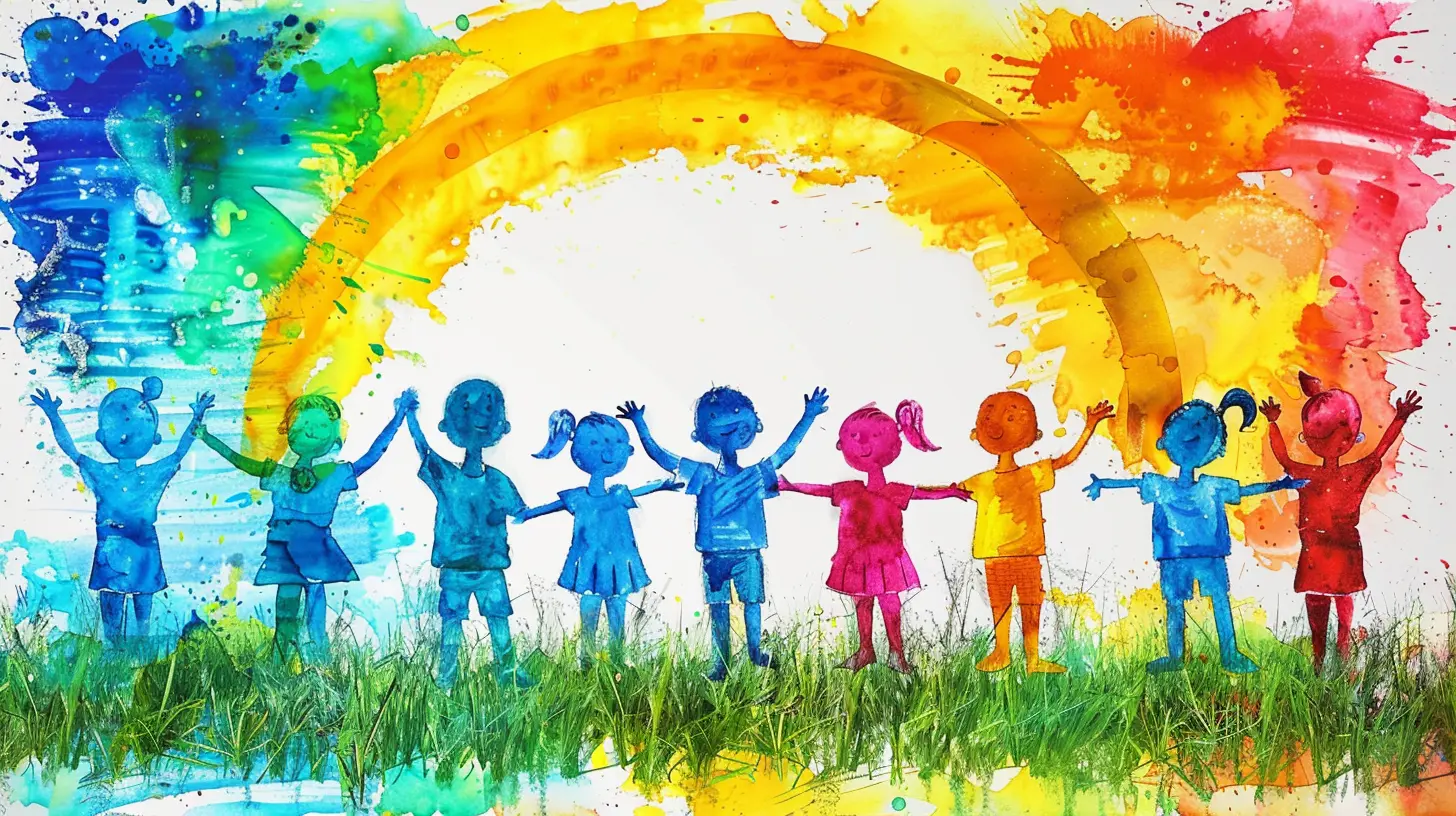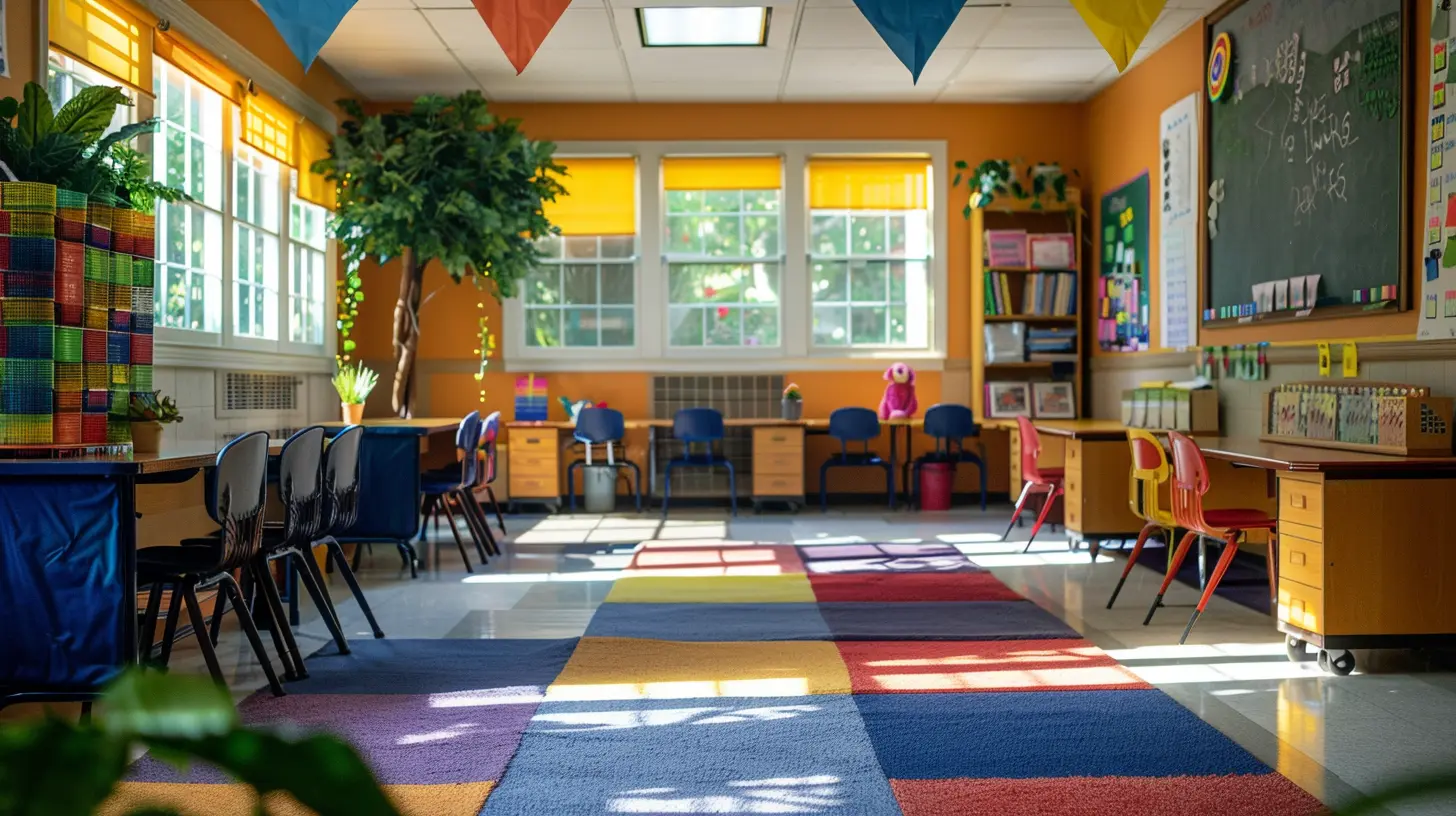Creating a Positive and Inclusive Classroom Environment
1 July 2025
Creating a positive and inclusive classroom environment isn't just a trendy goal—it’s the foundation of effective teaching and meaningful learning. Imagine walking into a classroom where every student feels safe, valued, and ready to participate. Sounds ideal, right? Well, it's not only possible, but it’s also essential if we want to shape curious, confident, and compassionate learners.
Whether you're a new teacher or a seasoned educator looking to refresh your approach, building a space where every child feels they belong is something you can start working on today. So, let’s break this down—no fluff, no jargon, just practical steps wrapped in real-life understanding.
Why Is a Positive and Inclusive Classroom Important?
Let’s start with the big question—why does it matter? A classroom isn’t just a place for handing out assignments or giving tests. It’s a mini-community, and like any community, the atmosphere can elevate or tear down the experience for those inside it.A positive environment empowers students to take risks, make mistakes, and try again without fear of judgment. An inclusive space ensures that no one feels left out—whether because of race, gender, learning ability, language, or background. When both these elements come together, learning naturally flourishes.
Simply put: When students feel seen and heard, they show up—not just physically but mentally and emotionally.
What Does a Positive Classroom Look Like?
Think of a positive classroom like a well-tended garden. When nurtured, it blossoms. But what does that actually look like?- Students smile, laugh, and interact freely.
- Teachers show genuine interest in students’ lives.
- Mistakes are treated as learning moments, not failures.
- There's mutual respect, not just rules and consequences.
- Feedback is constructive, not critical.
In this kind of setting, stress levels drop, engagement shoots up, and relationships grow stronger.
The Power of Inclusion: Every Voice Matters
Inclusion isn’t just about physical access or checking boxes for diversity. It’s about attitudes, expectations, and actions. Kids come to school with different experiences, cultures, and learning needs. When we create space for all of these differences, we’re not just teaching content—we're shaping citizens of the world.Ask yourself: In what ways are students invited to bring their whole selves into the classroom?
When students see books with characters like them, hear their languages respected, or witness their learning styles acknowledged, it sends a powerful message—"You belong here."
Building Relationships First
Here’s the truth: Students don’t learn from people they don’t trust.One of the most underrated (yet most impactful) strategies for building a positive classroom is developing strong teacher-student relationships. You don’t have to be their best friend, but students should know you genuinely care.
How can you build trust and connection?
- Greet them by name every day.
- Ask about their weekend or interests.
- Notice their moods and check in.
- Be consistent and fair.
- Share appropriate stories from your life to show you’re human too.
When students feel a connection, they’re more motivated to participate and less likely to act out.
Set the Tone from Day One
The first few days of school are like setting the thermostat. Get it right early, and the temperature stays comfortable. Wait too long, and it’s harder to adjust.Start with clear expectations, not just for behavior, but for how we treat one another. Talk openly about kindness, respect, teamwork, and acceptance. Model it. Celebrate it. Reinforce it.
Create classroom norms together with your students. When they help write the rules, they’re more likely to respect them. Use affirmations like:
- "In our class, everyone gets a chance to speak."
- "We help each other grow, not tear each other down."
- "Different doesn’t mean less—it means interesting."
Let the values be more than just posters on a wall.
Foster Student Voice and Choice
Nobody likes feeling voiceless, especially kids. One of the easiest ways to promote inclusion is to empower student voice. Give them choices. Ask for their opinions. Respond to their feedback.You can start by:
- Letting students choose topics for projects.
- Giving options on how they present their work (poster, video, podcast, etc.).
- Creating a "question box" where students can ask anonymously.
- Holding regular class meetings to discuss concerns and ideas.
When students have a real say in the classroom, they feel respected—and with that comes responsibility and enthusiasm.
Celebrate Differences, Don’t Just Tolerate Them
We’ve moved past “tolerance.” It’s not enough to merely accept differences—we should embrace and celebrate them.Turn cultural holidays, heritage months, and learning styles into an opportunity for celebration and education. Bring in guest speakers, read diverse literature, or try group activities that allow students to share from their own backgrounds.
You might ask:
- “Who can share a tradition from their family?”
- “What languages do you hear at home?”
- “What makes you unique—and how can we appreciate that together?”
Little moments of recognition can go a long way in making someone feel included.
Create a Safe Space for Mistakes
Let’s be real—learning is messy.No one gets everything right the first time, especially in school. Yet so many students are terrified of being wrong. That fear quickly creates silence, avoidance, and disengagement.
So, what’s the fix? Normalize mistakes. Celebrate them as stepping stones. Tell stories of famous failures. Share your own flubs (trust me, kids love that). Use phrases like:
- “Mistakes mean you’re trying.”
- “Let’s figure it out together.”
- “That’s a great question—I don’t know, but let’s find out.”
A growth mindset isn’t just a buzzword—it’s a lifestyle shift for both teachers and students.
Encourage Collaboration Over Competition
A little healthy competition can be fun, but too much can breed jealousy, isolation, and anxiety. Instead, aim for collaboration.Group projects, peer tutoring, team challenges—all these encourage working together while building communication and empathy skills.
When students see each other as teammates rather than rivals, the classroom becomes a community. They look out for each other, lift each other up, and understand that everyone contributes something valuable.
Address Bias and Stereotypes Head-On
Now, this part is crucial. Ignoring bias doesn’t make it go away. If left unchecked, stereotypes, microaggressions, and favoritism can poison the classroom environment.Be proactive. Teach about bias. Call out unfair comments—not to shame the student, but to educate and redirect. Encourage open conversations about identity, privilege, and fairness in age-appropriate ways.
If your students hear or experience something hurtful, create a space where they can talk about it safely. And when you mess up (because we all do), own up to it. Show them what accountability looks like.
Incorporate Social-Emotional Learning (SEL)
Incorporating SEL isn't just a bonus—it’s a necessity. Emotional intelligence is just as important as academic success. Students need tools to manage feelings, make responsible decisions, and build strong relationships.Daily check-ins, mindfulness breaks, and SEL journals can help students reflect and regulate their emotions. Even simple practices like a “feelings circle” once a week can give voice to emotions that might otherwise explode later.
Remember, if students can’t manage what’s happening inside, they won’t be able to focus on anything outside.
Make Physical Space Welcoming and Accessible
The classroom’s physical environment plays a big role in how students feel. Is your space inviting? Does it reflect the diversity and interests of your students?Here are a few quick wins:
- Display student work on the walls.
- Include multicultural books and materials.
- Ensure furniture is arranged so everyone can move around comfortably.
- Use visuals and colors that feel warm and inclusive.
It doesn’t have to be fancy or expensive—it just has to feel like a place where students matter.
Keep Learning Yourself
Finally, let’s not pretend we have all the answers. Creating a positive and inclusive classroom is an ongoing journey, not a checklist.Keep reading, attending workshops, and listening to students’ feedback. Be humble enough to admit when something isn’t working, and brave enough to try something new.
Ask yourself often:
- Who isn’t feeling included?
- What more can I do to support diverse learners?
- How can I improve the classroom experience for all?
It’s not about being perfect—it’s about being present and purposeful.
Final Thoughts
Creating a positive and inclusive classroom environment isn’t a one-time project. It’s a daily commitment. It’s about building trust, fostering respect, embracing diversity, and nurturing growth.Yes, it takes effort. Yes, you’ll stumble. But when you see your students flourish—when the quiet kid finally raises their hand, or when classmates support each other without being asked—it all becomes worth it.
This isn’t just good teaching. It’s heart work. And it starts with you.
all images in this post were generated using AI tools
Category:
Teacher ResourcesAuthor:

Fiona McFarlin
Discussion
rate this article
1 comments
Gideon McMichael
Empathy fosters genuine connections.
July 8, 2025 at 3:19 AM

Fiona McFarlin
Absolutely! Empathy is essential for building trust and understanding, which enhances connections among students and creates a supportive classroom atmosphere.


